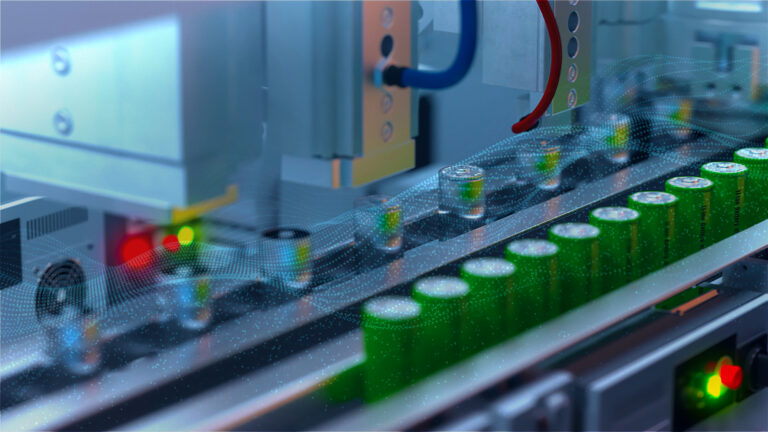Hexagon has unveiled a new battery cell design solution that combines Fraunhofer ITWM’s electro-chemical simulation technology with Hexagon’s multi-physics material simulation and metrology software to accelerate battery cell research and development.
Hexagon’s electrochemical battery design solution integrates Fraunhofer ITWM’s Battery and Electrochemistry Simulation Tool (BEST) solver within Hexagon’s Digital Materials suite, which enables efficient multi-physics exploration of cell designs while accounting for effects from manufacturing processes.
This “virtual laboratory” has significant cost and productivity benefits. Through a single user interface, customers can model the microstructure of the electrodes through to the complete assembly of the cell (electrolyte, separator, active material, binder, current collector) from an embedded library of battery materials, and explore the impact that alterations in material properties and battery microstructure have.
Guillaume Boisot, senior director, materials and platforms, said, “Much of this complex process has historically relied on trial and error, but through our partnership with Fraunhofer ITWM we believe we can help R&D teams pursue better performing battery cell designs, and develop them faster with rapid feedback from prototypes.”
Subham Sett, vice president of multiphysics at Hexagon, added, “We’ve invested in our thermal management and runaway simulations, and with this new addition we believe we can help manufacturers get a more holistic view of these multiphysics interactions on their journey to shift left in the design process.”
Dr. Jochen Zausch of Fraunhofer ITWM said, “We have enjoyed an excellent technical collaboration to bring our highly trusted BEST battery electrochemistry solver capabilities into Hexagon’s innovative material modeling software, and we look forward to helping drive forward new battery innovation faster with this comprehensive simulation workflow.”
The new solution integrates Frauenhofer ITWM’s BEST solver into Hexagon’s Digimat material behavior modeling software. From a single UI, users can simulate the electrochemistry of a cell’s constituent microstructure, as well as zinc and sodium battery chemistries, using Fraunhofer ITWM’s advanced electrochemical modelling techniques.
Digimat includes a library of material properties that can be extended within the software or using Hexagon’s MaterialCenter and Materials Connect material data management software. Microstructures can be either imported from CT scan analyses using VGStudio Max or created directly in Digimat.
Furthermore, battery design teams can apply their microstructure model developed in Digimat to investigate mechanical property characterization. Macro-scale material behavior can be assessed using a representative volume element (RVE), extending the model’s capability for structural analyses of the cell by embedding a simplified Digimat material model into the relevant analysis software.


